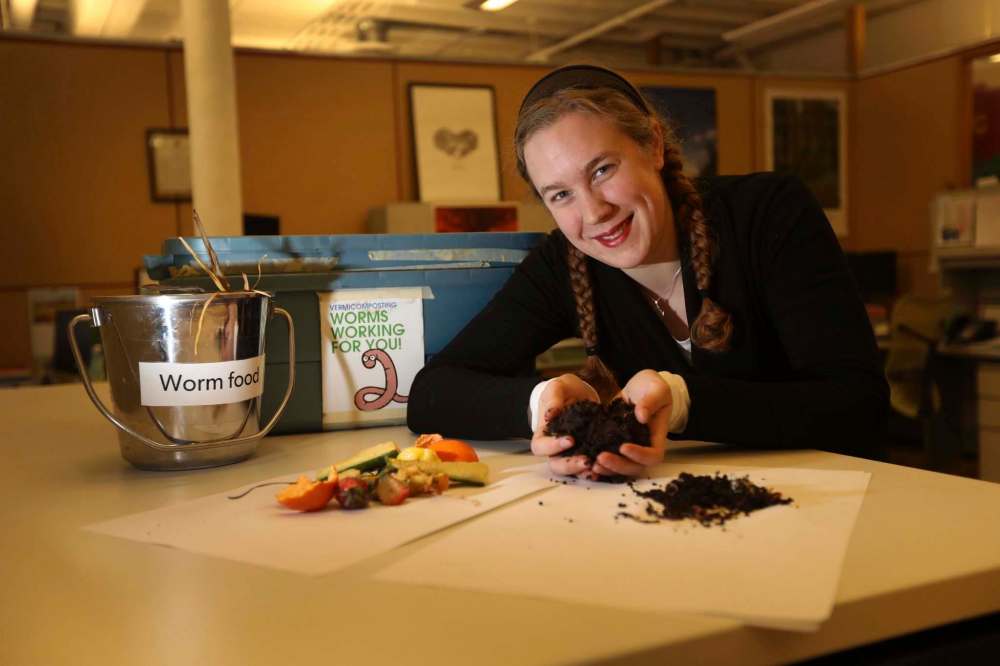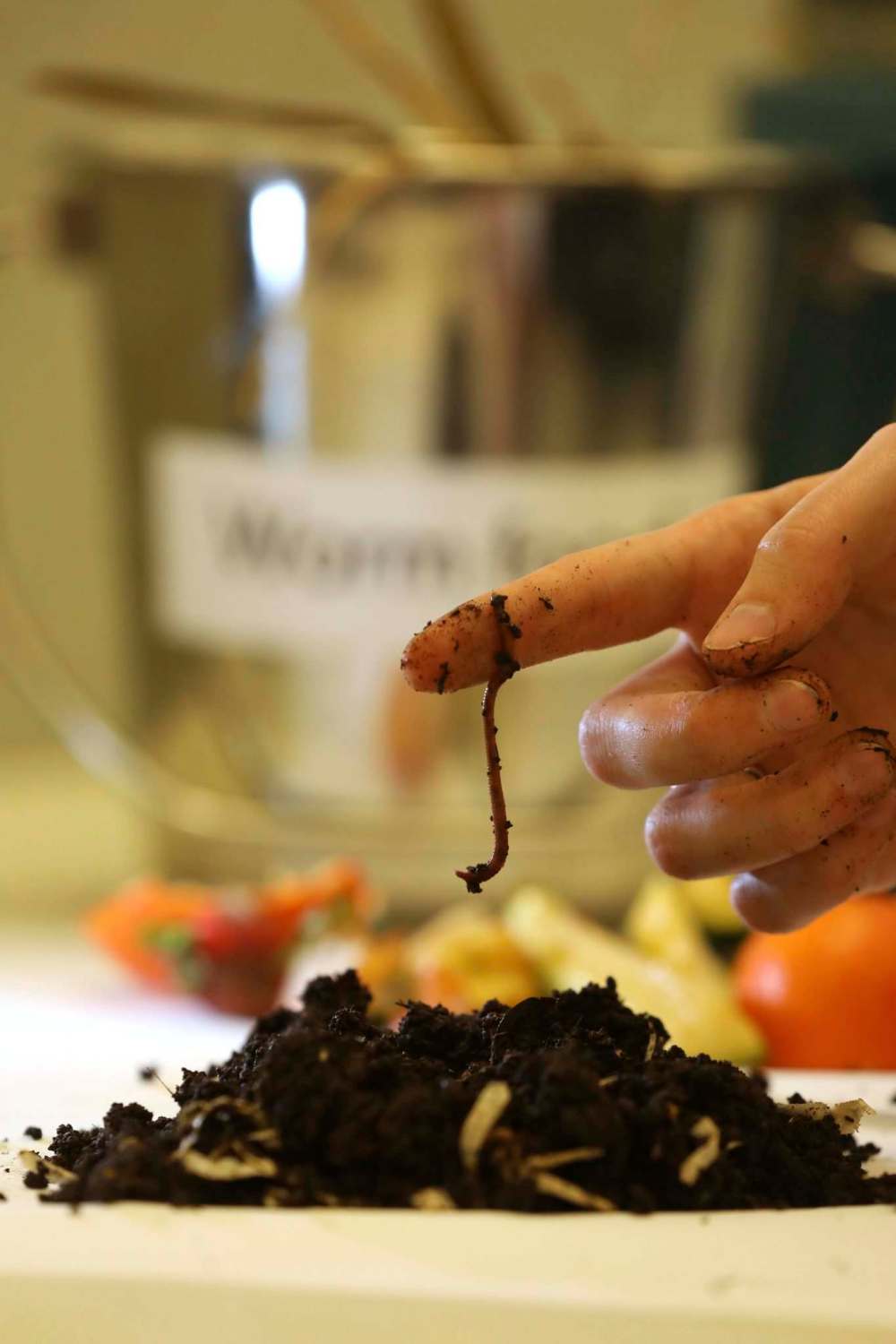Let worms do your dirty work
Updated book shows how families can go green with vermicomposting
Advertisement
Read this article for free:
or
Already have an account? Log in here »
To continue reading, please subscribe:
Monthly Digital Subscription
$0 for the first 4 weeks*
- Enjoy unlimited reading on winnipegfreepress.com
- Read the E-Edition, our digital replica newspaper
- Access News Break, our award-winning app
- Play interactive puzzles
*No charge for 4 weeks then price increases to the regular rate of $19.00 plus GST every four weeks. Offer available to new and qualified returning subscribers only. Cancel any time.
Monthly Digital Subscription
$4.75/week*
- Enjoy unlimited reading on winnipegfreepress.com
- Read the E-Edition, our digital replica newspaper
- Access News Break, our award-winning app
- Play interactive puzzles
*Billed as $19 plus GST every four weeks. Cancel any time.
To continue reading, please subscribe:
Add Free Press access to your Brandon Sun subscription for only an additional
$1 for the first 4 weeks*
*Your next subscription payment will increase by $1.00 and you will be charged $16.99 plus GST for four weeks. After four weeks, your payment will increase to $23.99 plus GST every four weeks.
Read unlimited articles for free today:
or
Already have an account? Log in here »
Hey there, time traveller!
This article was published 24/02/2018 (2838 days ago), so information in it may no longer be current.
Nobody likes me.
Everybody hates me.
I’m gonna eat some worms.

Remember that children’s classic?
Let’s turn that frown upside down and instead of eating the worms, let the worms do the eating — specifically, your garbage. Starting and maintaining a worm composting bin in your home helps to divert selected food waste from landfills.
That way, everybody will love you. Especially the planet.
It’s been 35 years and 200,000 copies since the late Mary Appelhof (she died in 2005) started selling Worms Eat My Garbage: How to Set Up and Maintain a Worm Composting System (Storey Publishing, $22.95), out of her home. It’s been a slow but steady seller. The anniversary edition (updated by Joanne Olszewski) is new on the bookshelves, just in time to plan a spring project.
Teresa Looy, compost program co-ordinator, advocate and educator with the Green Action Centre (greenactioncentre.ca), was surprised it’s been 35 years.
“It’s definitely the one book we tell people to read,” Looy says.
“I think it’s time to reread it myself!”
Worms Eat My Garbage is a simple, thoroughly written vermicomposting manual with information on how to build, stock and maintain a residential worm composting bin, and with useful illustrations to back the step-by-step instructions.

Looy maintains a worm composting bin at the Green Action Centre office in Winnipeg and she’s led many workshops on the subject.
“Worm composting is feeding worms certain food scraps so the worms produce castings — which is worm poop — a rich natural fertilizer, which can then be used in your garden and house plants,” Looy says.
“It’s ideal for anyone who doesn’t have access to a yard or anyone who can’t or doesn’t want to go outside in the winter or can’t manage the outdoor compost turning.”
She also says the bins are great for families with young children and are popular with teachers as a teaching tool. In addition to the science, students get to learn about the responsibility of caring for living creatures.
The bin at the Green Action Centre consists of two Rubbermaid bins, one stacked inside the other (their shape creates a natural space at the bottom on the inside). The bottom bin collects waste water or leachate from the top bin, which contains the worms, the bedding, the food and the castings. The top bin has holes to accommodate drainage out the bottom as well as air holes to ensure fresh air for the worms.
To feed the worms, Looy opens the bin filled with red wiggler worms and bedding (shredded paper, for example), buries the food scraps in the bedding, adds a little water if it looks dry and covers the bin. The worms then go to work.
That’s the basic process. If you enjoy gardening, your plants will love it. If you have an angler in the family, over time, excess worms (let’s call them “wormage”) can be used for bait.
There is a cautionary chapter on invasive worm species in Worms Eat My Garbage. Red wiggler worms are the worms used for composting. Earthworms from your yard don’t do this kind of work; they’ll just try to escape. Red wigglers cannot survive in temperatures below 10 C, so they will die here outside of the bins or in a garage. Green Action Centre lists reliable suppliers of red wigglers on its website.

The centre offers free workshops, often through public libraries. Its website is loaded with information on worm composting as well as other kinds of composting (and active transportation). Details for its programs are online.
“We also come to schools, workplaces and community groups to present, and we offer build-your-own bin workshops — which we do charge for,” Looy says. “We also run the composting info line at 1-866-394-8880 or in Winnipeg at 204-925-3777 and we can answer questions via email (compost@greenactioncentre.ca).”
You’ll also find the centre’s free vermicomposting booklet here: greenactioncentre.ca/wp-content/uploads/2014/11/Vermicomposting-Booklet_1logo_WEB.pdf.
Twitter: @WendyKinginWpg

